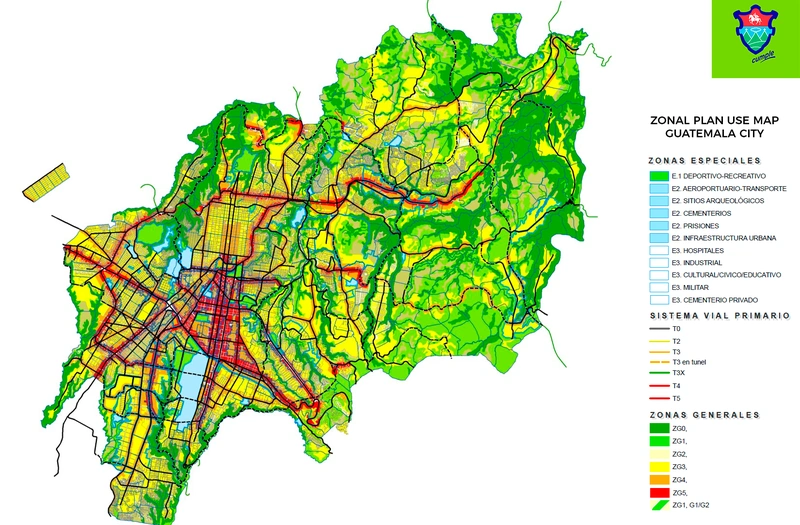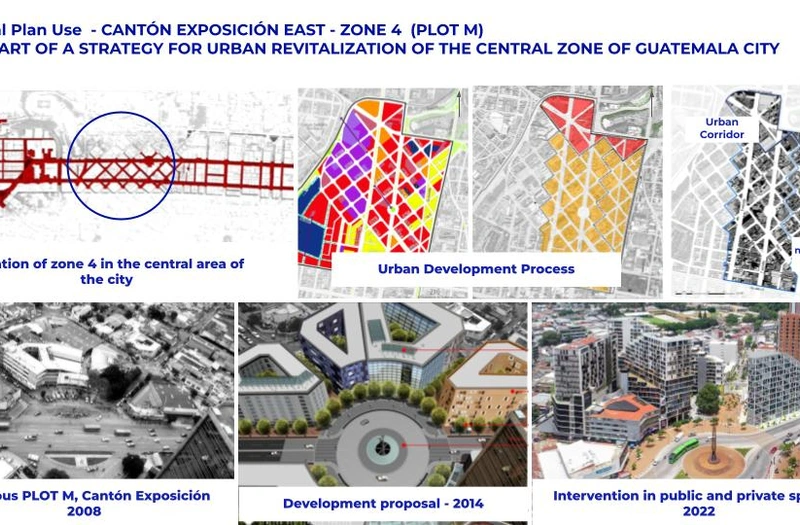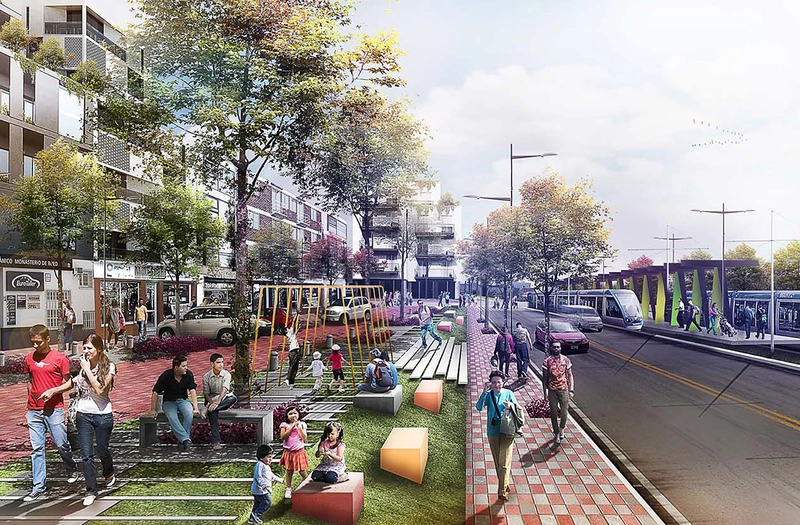The Tívoli District is part of the planning strategy of Guatemala City for the next 30 years called “Opportunity District”, which is located in the most important economic sector of the city and the country, which has about 62% of Guatemala’s businesses, as well as 60% of the working population. It was an important part of the city’s growth in the last 50 years and has undergone a process of reconversion of uses and increase in commerce and services.
This District is a sector endowed with urban facilities of different types due to its privileged location and 70% of its territory is for commercial use and with a large presence of offices and flow of people, making it necessary to strengthen accessibility and connectivity to other territories, therefore an urban mobility plan for the city is being implemented , which includes a new urban transportation type mass transit system, called Aerometro and a system of bicycle lanes linked to the existing Bus Rapid Transit (BRT) lines, called Transmetro. This will connect the Tivoli District with the entire City.
As part of the continuous improvement actions, new facilities have been added, such as the Plaza España, a meeting point, a social coexistence place and enhancement of the value of the heritage. The improvement of public spaces and the implementation of green corridors are in process, to consolidate the urban image and environmental quality of the sector. Since 2021, a Gastronomic sector is being promoted in order to reactivate and strengthen the local economy.
As part of the economic reactivation process for the city, the central government is developing the preliminary project for the new Convention Center, located in the northern part of the District, a disuse park which has been used as a hospital due Covid. This will attract new investments to the sector, generate direct and indirect jobs, and promote internacional corporate tourism, complementing the hotel, restaurant and office sectors within the District and its nearby areas of influence.
There is also a challenge in the area due to its proximity to la Aurora International Airport. which restricts the height edifying capacity for some areas within this sector. For this reason, an innovative regulation is proposed that will allow the transfer of buildability to other sectors of the city, thus promoting a new development model based on mixed uses complementary to current uses.
The implementation of the Tivoli District will benefit 60% of the working population of Guatemala City and will promote both the economic reactivation of existing productive sectors and the attraction of new companies in the following years.
Over the next 4 years, the incorporation of the new mobility systems will benefit 374,000 daily users, improving their quality of life by improving their travel times in and out of the city.
The preliminary project of the new Convention Center will generate jobs and provide economic growth to the sector, attract international investment, promote corporate tourism, new urban interventions, as well as the implementation of new uses such as hotels, restaurants and recreational areas, all of which will result in the revitalization of the sector. The transfer of buildability will attract private sector investment in the District and will in turn benefit development in other parts of the city.
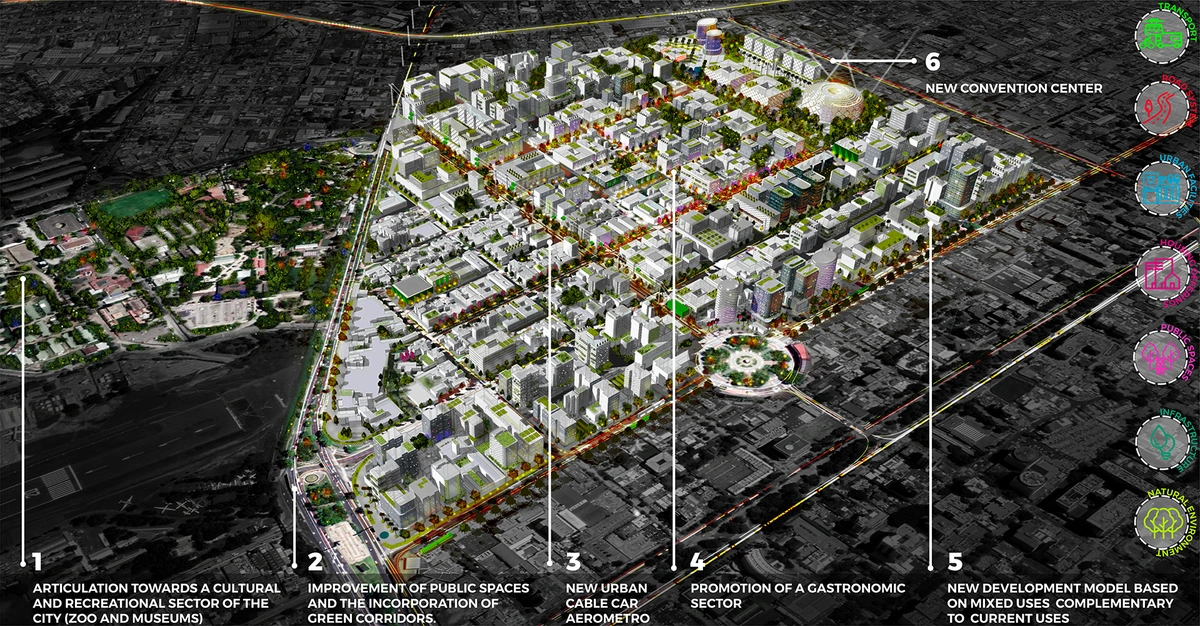
Urban transformation of the Tivoli District through a new form of planning that promotes the incorporation of new uses, provision of new urban facilities, a new convention center, strengthening of mobility and connectivity in the territory, attraction of housing, as well as the improvement of environmental conditions and public spaces. It promotes the articulation towards the cultural and recreational sector of the city, including the zoo and museums.
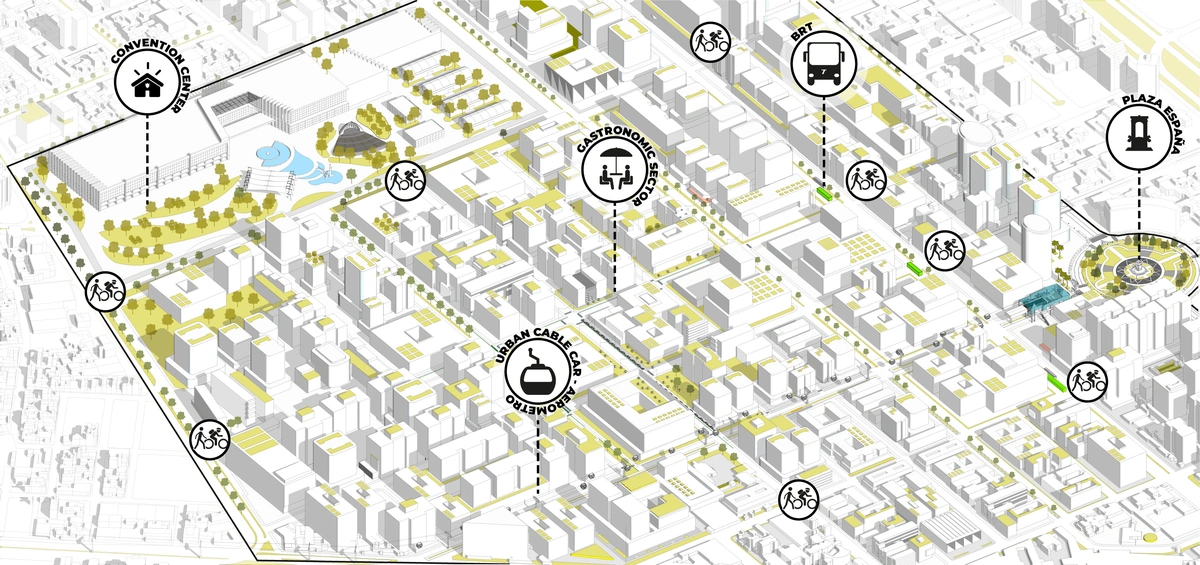
Scheme of transformation of the area around the Convention Center and the Gastronomic sector, being accessible through new mass transit systems and a network of bicycle lanes. It is complemented by new public space areas such as parks and plazas.
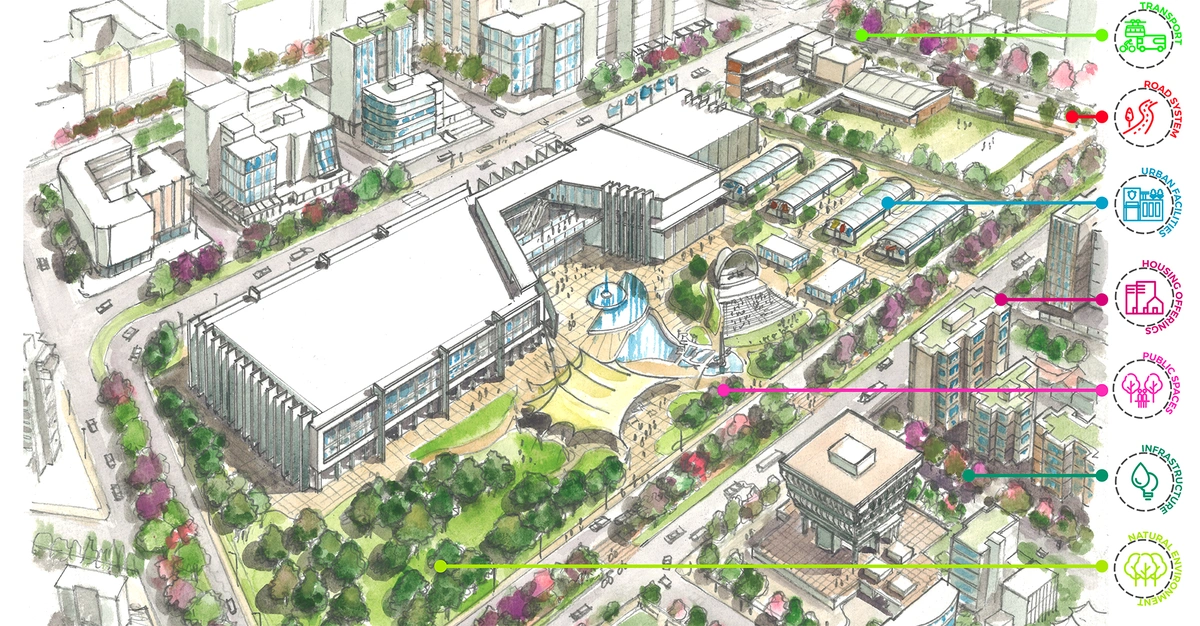
Convention Center integrated into an urban park and the transformation of the territory.
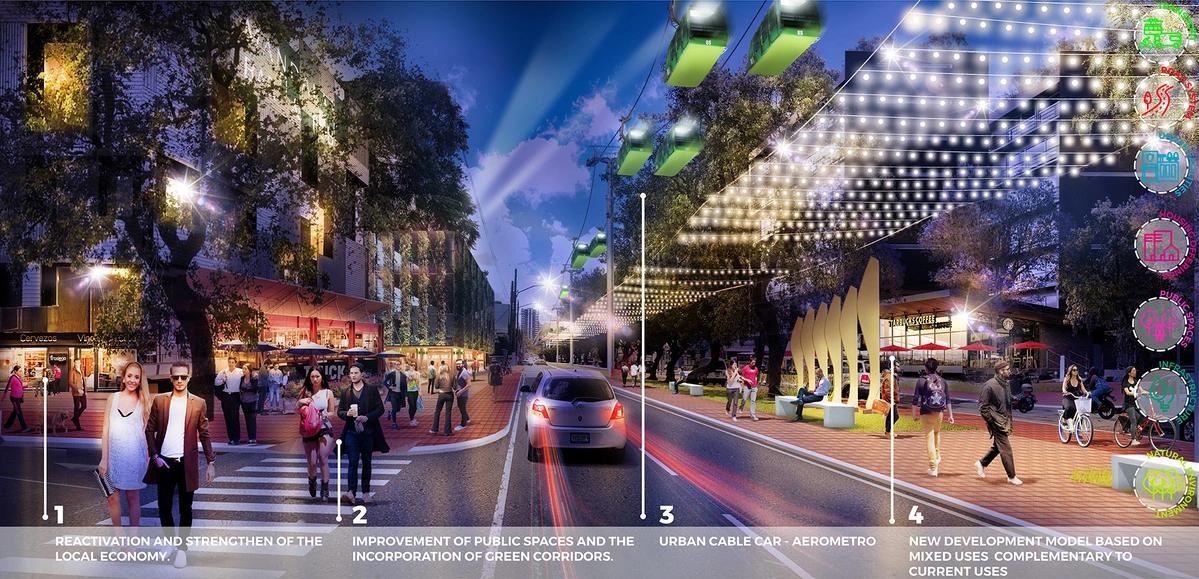
Urban transformations on local corridors, linked to new uses and mass transportation systems.
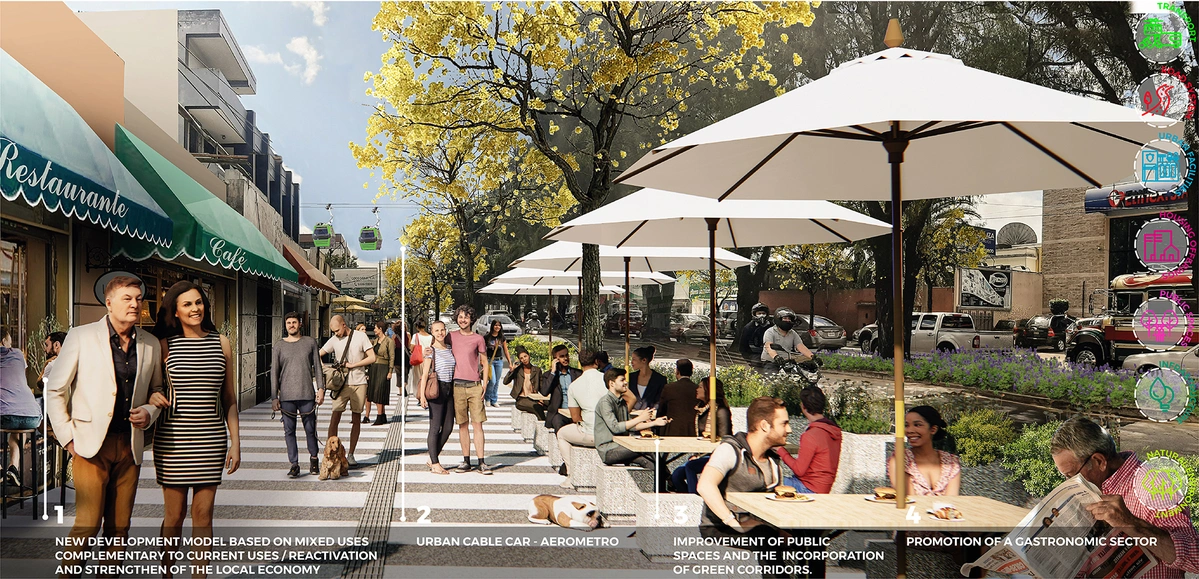
Improvement of public spaces and the promotion of a gastronomic sector to reactivate and strengthen the local economy.
The objective of the Guatemala City’s Department of Urban Planning (DUP) is to promote the adequate and efficient use of the territory in the capital city, through the generation of different mechanisms and regulatory instruments for land management, implementation of the land use and formulation of strategic urban plans, based on the compact city model that improves the quality of life of residents and their families.
Since its establishment in 2009 DUP has evolved and grown, assuming a leadership in the city management from the vision of urban planning for action in this contect positively addresses the challenges of equitable and sustainable development with solutions aimed at a strategic response to the challenges of a city that is a center of attraction at the national level by the concentration of economic functions, services and facilities.
